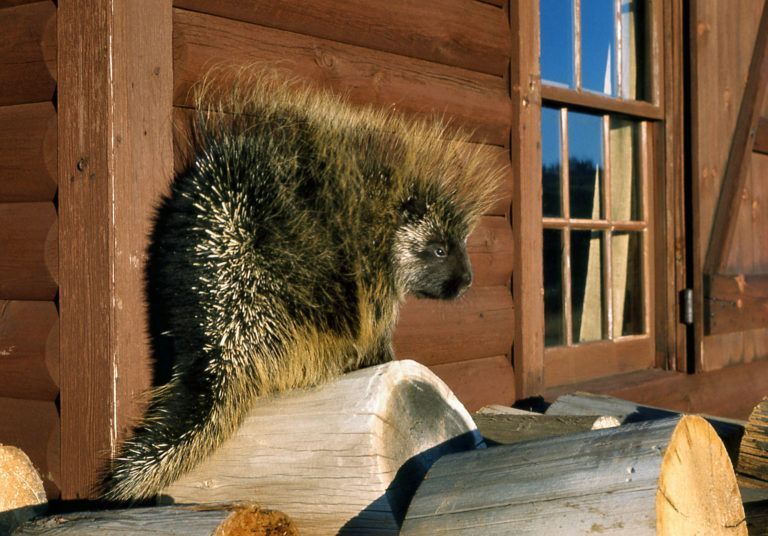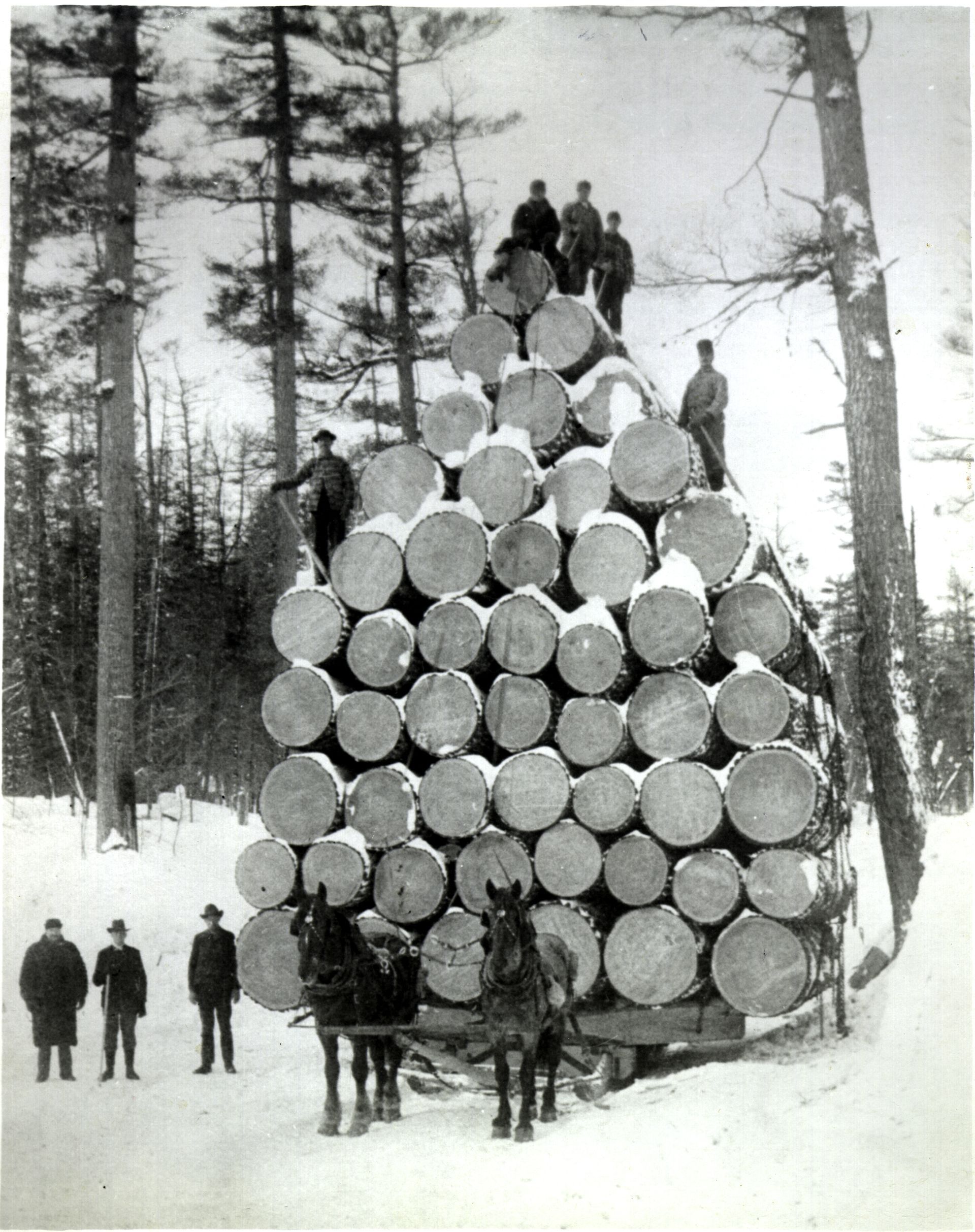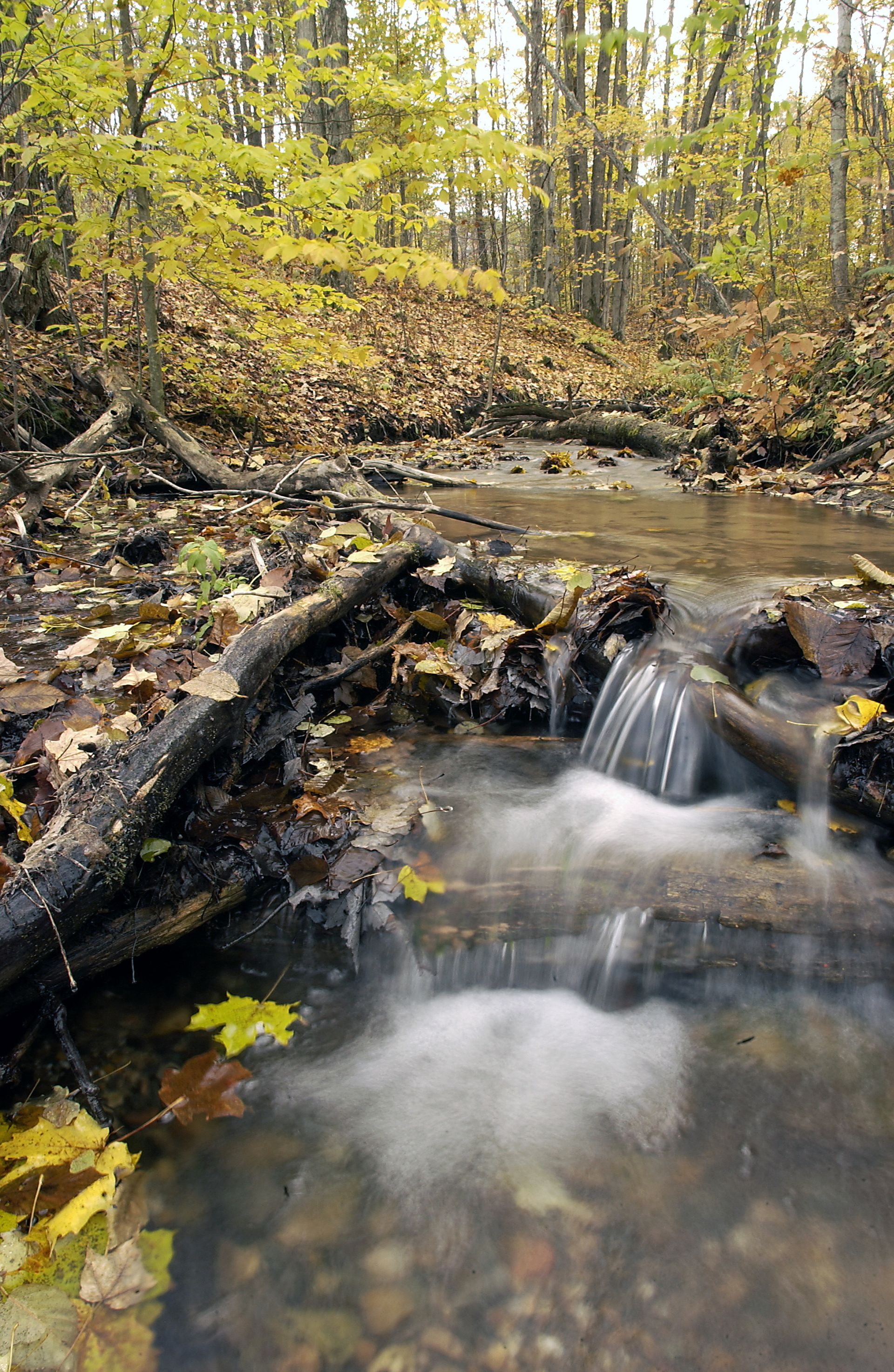Prickly Business: North American Porcupine

If you have ever been outdoors in northern Michigan, you may have encountered the great North American Porcupine (Erethizon dorsatum). This critter uses its quills as part of its unique defense system to effectively ward off predators. Some people may be surprised to learn the porcupine can be legally hunted or trapped year-round in Michigan. Whether you hunt or consider yourself a nature-enthusiast, it is best to know about these animals and the associated myths before venturing into their range.
Myths Debunked
North American Porcupine with quills on demonstration. Courtesy of Wikimedia.
A common myth regarding the quills of a porcupine, is their ability to be launched from afar to attack predators. In reality, the quills must come in direct contact with the target to be stuck. These quills have microscopic barbs on the end that resist being pulled ‘out’ of the skin due to facing the opposite direction. In contrast, the African counterpart of this species has larger quills without barbs along with a larger body.
If you or a pet are quilled, it is commonly debated whether cutting off the tips will release pressure in the quill for easy removal. VCA Animal Hospital states this often causes the quill to splinter making removal harder and more dangerous. When an embedded quill is splintered, the chances of fragments breaking off in the body and migrating to vital organs are higher.
What to do when quilled?
If your dog is quilled, VCA Animal Hospital recommends not attempting to remove quills yourself. Home removal without pain management may lead to abnormally aggressive responses from the pet due to the pain. It is best to minimize movement to prevent further pushing the quills internally and seek medical attention. A veterinarian can remove the quills and monitor for infections deeper in the tissues if a fragment is left behind.
Overall, it is best to remove quills quickly to prevent them from working further into the body and minimize pain. Quills move internally by about one inch per day as estimated by the Vermont Fish and Wildlife exemplifying the importance of quill removal. To minimize breakage, grab the tip of the quill with pliers and pull in the same direction of entry. The area can also be marked after removal to continue monitoring for infection or irritation.
Evidence of porcupine feeding on a tree. Courtesy of USDA Forest Service.
Habitat and Behavior
Porcupines are found in primarily coniferous forested areas across the northern portion of North America. These porcupines are herbivores with the ability to climb trees depending on the resources available. They also feed on tree bark which can be an indicator they are in the area. They typically den in the same location year after year during bad weather but do not hibernate over the winter.
Vermont Fish and Wildlife states the North American Porcupine residing in territories from 6 to 14 acres, typically preferring to be solitary. They use their quills on their rear end for protection and warding off predators from their territory.
Predation and Hunting
While the porcupine does have a menacing appearance with aposematic coloration, they do have natural predators. Fishers are one of the known predators, attacking in a way to avoid the quills and flip the porcupine on its back for easier attack. Other predators include wolves, coyotes, bobcats, and even great horned owls. Find more information about the North American Porcupine at the Animal Diversity Web.
Due to their foraging habits, porcupines can cause damage to forests which could be problematic for management of stands if the population is high. Porcupines also pose a threat to humans and pets that venture into their territory, especially those who may be unaware of their presence. The Michigan Department of Natural Resources (DNR) states year-round hunting or trapping available for this species, along with a few others. To legally harvest a porcupine, all you need is a current base license per the Small Game Hunting Regulations. Historically, porcupine quills were repurposed in crafting and decorating clothes by natives.
Recent Posts



